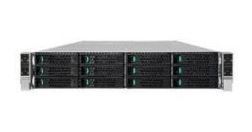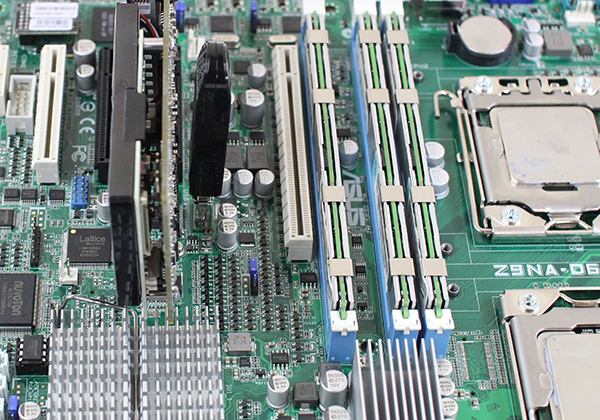A few months ago we foreshadowed major deals coming to the dual-socket home lab environment. Previously, the Dell C6100 with its four nodes of dual Nehalem-EP or Westmere-EP and 6 DIMMs per processor were popular virtualization lab platforms. We previously suggested that LGA1356 based “-EN” platforms were going to start showing up as excellent deals. Two months later, we are starting to see this occur.
With the release of Haswell-EP and the new socket LGA2011-3 platforms, there was no mention of a Haswell-EN part. Intel confirmed that the LGA1356 platform is essentially discontinued after the Intel Xeon E5-2400 V1 and V2 generations. LGA1356 is the physical socket for these chips. To answer one of the obvious questions, LGA1356 is not compatible with LGA2011 even though they are both Intel Xeon E5-2000 series processor families.
Recently, there has been a popular thread on the forums for -EN platforms. They are starting to pop-up as unsold new inventory and off-lease servers more frequently now. For example, some members are able to get dual socket systems and processors with a remote management module for under $600 USD.
For those wondering why these may be excellent platforms compared to the previous generation dual socket, triple channel memory platforms (e.g. LGA1366) there are a few key drivers:
- Sandy Bridge-EN (E5-2400 V1) was 32nm like Westmere-EP (Xeon 5600 series) but was a lower power consumption part
- Ivy Bridge-EN (E5-2400 V2) is a 22nm part and thus has significantly lower power for a given core count and clock speed
- The architecture change had significant IPC improvements
- For home labs, the IOH36 was a fairly warm part in the Xeon 5500 and 5600 platforms, so one lowers power consumption and cooling (noise) requirements with the integrated Xeon E5 architecture
- The Xeon E5-2400 has only 24 PCIe 3.0 lanes per processor, but the Xeon 5500 and 5600 series platforms were limited to PCIe 2.0. We are already seeing PCIe SSDs, network controllers, HBAs and other components take advantage of PCIe 3.0 bandwidth
- The Xeon E5-2450L V2 was a 10 core / 20 thread part at only 60w. The Westmere-EP parts only went up to 6 cores/ 12 threads so in a dual socket system the E5-2400 platforms can see up to 66% higher core counts
- The Xeon E5-2400 series has higher RAM speeds and capacity than previous generations
- Westmere-EP was limited to 12MB L3 cache while the E5-2400 V2 series could hit 25MB
- Processors with AVX instructions (v1) can be used in the newer E5 platforms
The bottom line here is that the E5-2400 “-EN” platforms are an incremental upgrade over the previously popular Intel Xeon 5500 and 5600 platforms. They integrate much of the newer technology that is present even in the newest Haswell-EP generation of parts.

One example noted in the forums by Hank C are these new Intel H2216LPJR system which combines four nodes in a 2U enclosure and is selling with best offer options ($1300 BIN but allegedly best offer is taking the price down considerably.)
Head on over to the forums to see what deals members are finding for their virtualization labs and hosting servers.





Still prefer 2011 systems. 40 lanes PCi-e, 12core E5-2695v2 support, 1 more memory channel(2-3 more DIMMs), and mostly because of all those extra features at literally no TDP increase, and there will be far more supply for 2011 cpus when corporations need to write down inventory.
Great news, I’ve been itching to upgrade my home server!!
I also prefer 2011, because much wider selection of motherboards and CPUs for it. 1356 has very limited number of boards. Yes 1356 socket is cheaper on average, but because larger pull of parts for 2011 it is possible to strike good deal for that platform too. Also selling 2011 parts later should be easier, because more people are looking for it.
Another advantage of 2011 is number of memory slots, so larger memory configurations are possible. There are several 24 memory slots boards which means using currently reasonably priced on ebay 16GB modules it is possible to have up to 384GB of ram if needed.
All good points. Someone managed to grab a $99 HP G8 for $99 today with 8GB of RAM and a CPU. That is an entire system minus drives for less than the lowest cost LGA2011 processor.